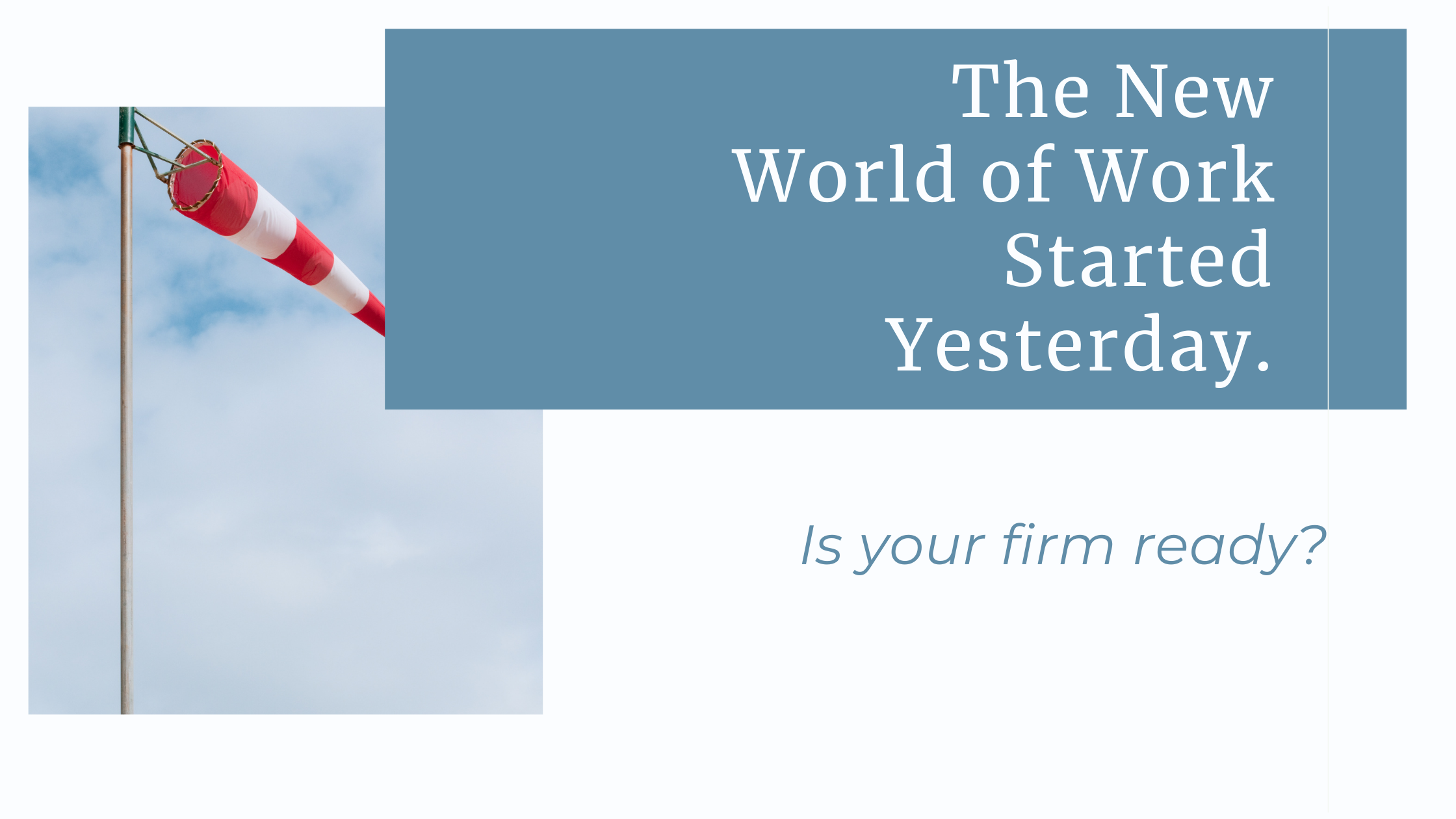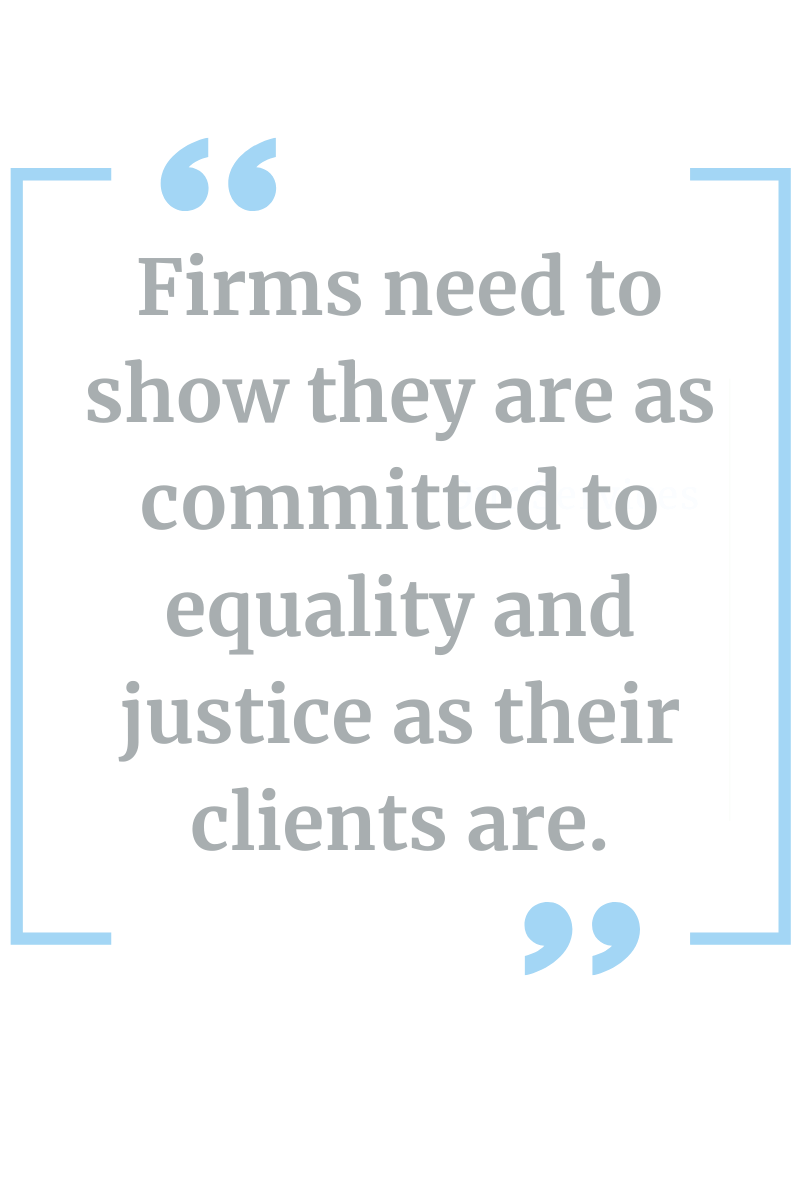Is Your Firm Ready for the New World of Work?

“That’s the way we’ve always done it.” “It’s always worked before.” “I had to do it that way when I started.”
Do any of these sound familiar? If your law firm is like most, you’ve probably heard these or similar statements just about any time change is proposed.
Statements like these are the telltale signs of a sunk cost mindset and they can interfere with a firm’s ability to adapt to evolving client needs. Think of the market for legal services like an ocean – one where the currents and weather are unpredictable. Would you rather be anchored down in one spot, vulnerable to passing storms? Or do you want your firm to be sure and swift – with a ready crew and plenty of wind to fill the sails?
Lawyers Need to Get Comfortable with Being Uncomfortable
Whether attorneys are ready or not, the weather is already changing and their clients know it. Businesses and agencies alike have been called to support the mental health and wellbeing of their workforce, and reckon with tough issues of equality and social justice. Firms need to show they are as committed to these issues as their clients are.
Change isn’t easy. And it’s especially challenging for lawyers, who generally prefer to stay within the bounds of precedent rather than forge new and risky paths. Let’s face it, there are not a lot of tried-and-true solutions, which means law firms are going to have to try new things – some will work and some will not. The important thing is to learn from ideas that didn’t work and take that information into the next idea. There is no failing – only learning.

Adopt a Designer’s Mindset
If you’ve read a few of the articles on this page, you probably know that we are passionate about bringing human-centered design to the business of law. Changing your mindset from success/failure to strengthen/learn is one reason why. Another reason is the designer’s bias to action.
Designers don’t think and plan their way forward, they build their way forward. They gather enough information to frame the problem, come up with a few ideas, and then they act. They test their ideas out – starting with simple, small-scale prototypes, gathering more information, tweaking (or even abandoning) their designs before testing again. This is a fluid process, and designers move through it multiple times until they have a final design design that is worth investing resources in.
Testing ideas out early not only reserves resources for solutions that work for your firm, it also allows those, shall we say “traditionalists?,” to be part of the process and – more importantly – part of the solution.
Wait, isn’t design for things – like cars and cell phones?
Yes, you can design things like cars and cell phones – product design has been around for decades. But you can also design processes and services. Let’s say the responsible attorneys are notoriously late in approving invoices. Design thinking can help law firms ask the right questions, understand where the gaps are, and bring the firm together around solutions.
Prototyping these types of ideas will look different. Prototyping might look like seeing what other firms are doing well (or not.) Maybe it’s centralizing the process or changing the timing of the steps. Or some other solution that could only happen because the head of accounting got in a room with partners, secretaries, and others to answer the question: “how might we keep more a/r current?”
Embrace the Uncertainty
As lawyers, we like to have the answers. We like to know what works and what does not. But whether you blame it on technology, the pandemic, or Millennials or some combination, change is already here and the rate of change is accelerating. Don’t let your firm get washed out for failure to haul anchor and move with the tide.
